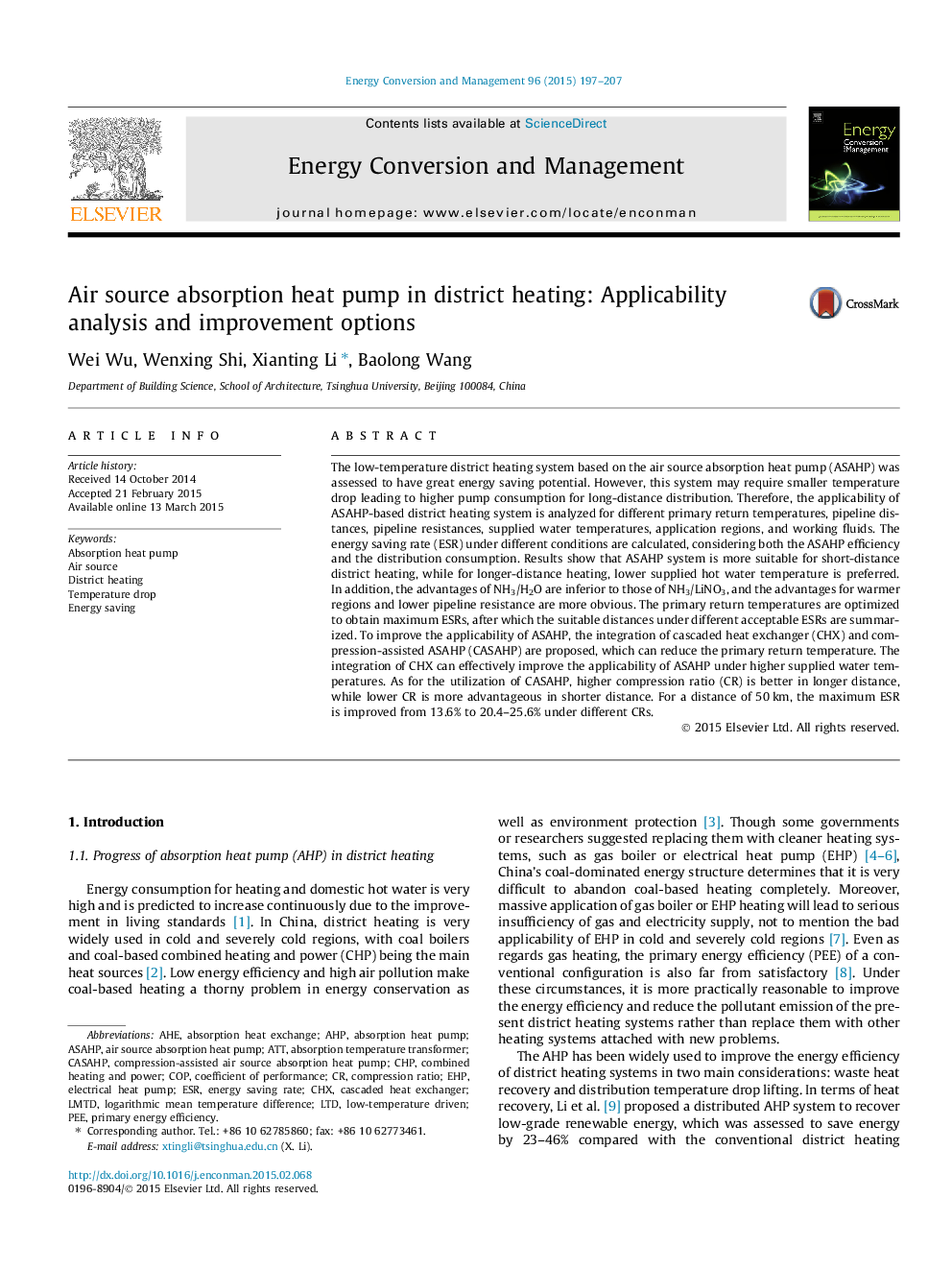| Article ID | Journal | Published Year | Pages | File Type |
|---|---|---|---|---|
| 763563 | Energy Conversion and Management | 2015 | 11 Pages |
•Applicability of air source absorption heat pump (ASAHP) district heating is studied.•Return temperature and energy saving rate (ESR) in various conditions are optimized.•ASAHP is more suitable for shorter distance or lower temperature district heating.•Two options can reduce the primary return temperature and improve the applicability.•The maximum ESR is improved from 13.6% to 20.4–25.6% by compression-assisted ASAHP.
The low-temperature district heating system based on the air source absorption heat pump (ASAHP) was assessed to have great energy saving potential. However, this system may require smaller temperature drop leading to higher pump consumption for long-distance distribution. Therefore, the applicability of ASAHP-based district heating system is analyzed for different primary return temperatures, pipeline distances, pipeline resistances, supplied water temperatures, application regions, and working fluids. The energy saving rate (ESR) under different conditions are calculated, considering both the ASAHP efficiency and the distribution consumption. Results show that ASAHP system is more suitable for short-distance district heating, while for longer-distance heating, lower supplied hot water temperature is preferred. In addition, the advantages of NH3/H2O are inferior to those of NH3/LiNO3, and the advantages for warmer regions and lower pipeline resistance are more obvious. The primary return temperatures are optimized to obtain maximum ESRs, after which the suitable distances under different acceptable ESRs are summarized. To improve the applicability of ASAHP, the integration of cascaded heat exchanger (CHX) and compression-assisted ASAHP (CASAHP) are proposed, which can reduce the primary return temperature. The integration of CHX can effectively improve the applicability of ASAHP under higher supplied water temperatures. As for the utilization of CASAHP, higher compression ratio (CR) is better in longer distance, while lower CR is more advantageous in shorter distance. For a distance of 50 km, the maximum ESR is improved from 13.6% to 20.4–25.6% under different CRs.
Graphical abstractFigure optionsDownload full-size imageDownload as PowerPoint slide
